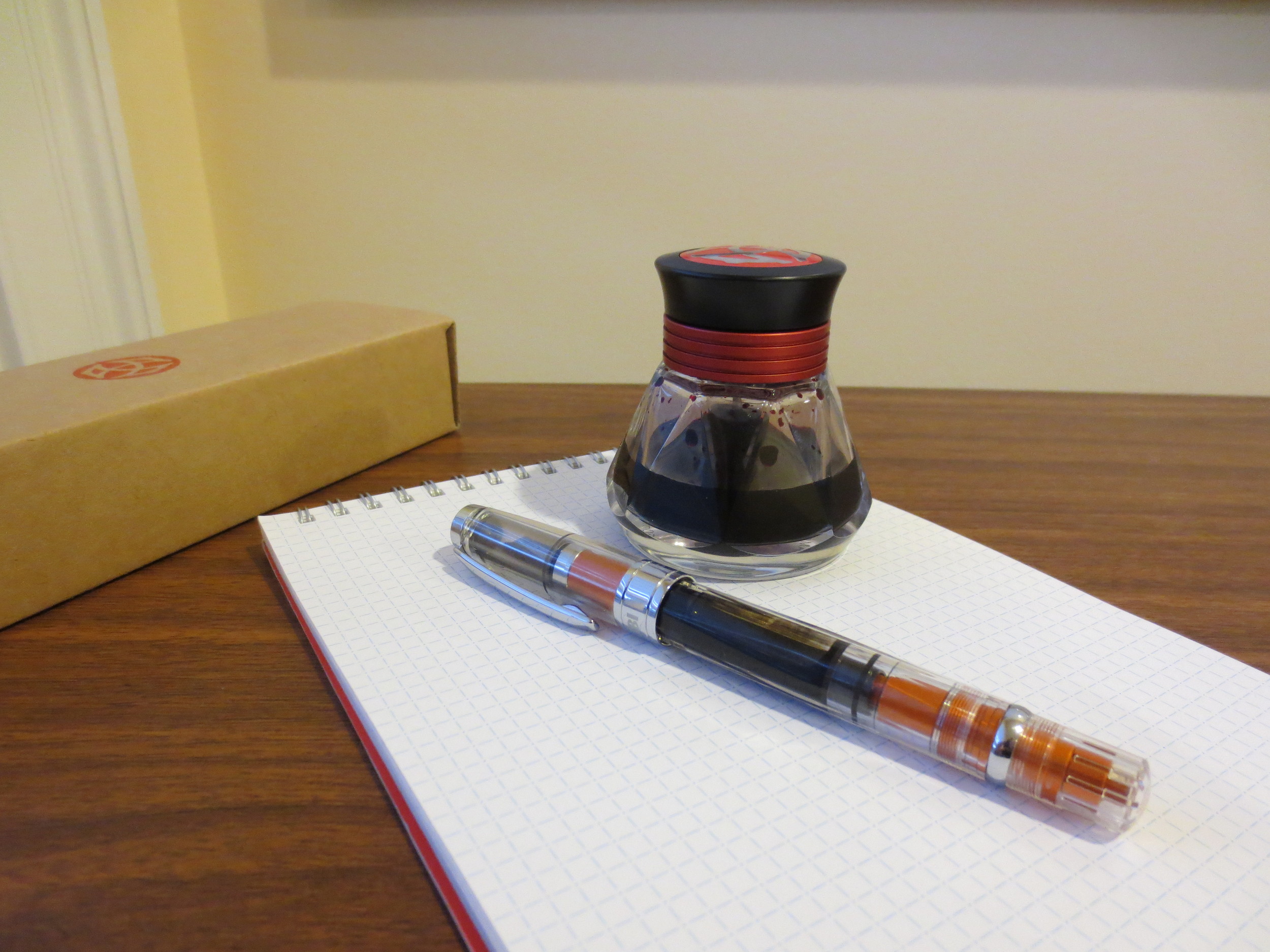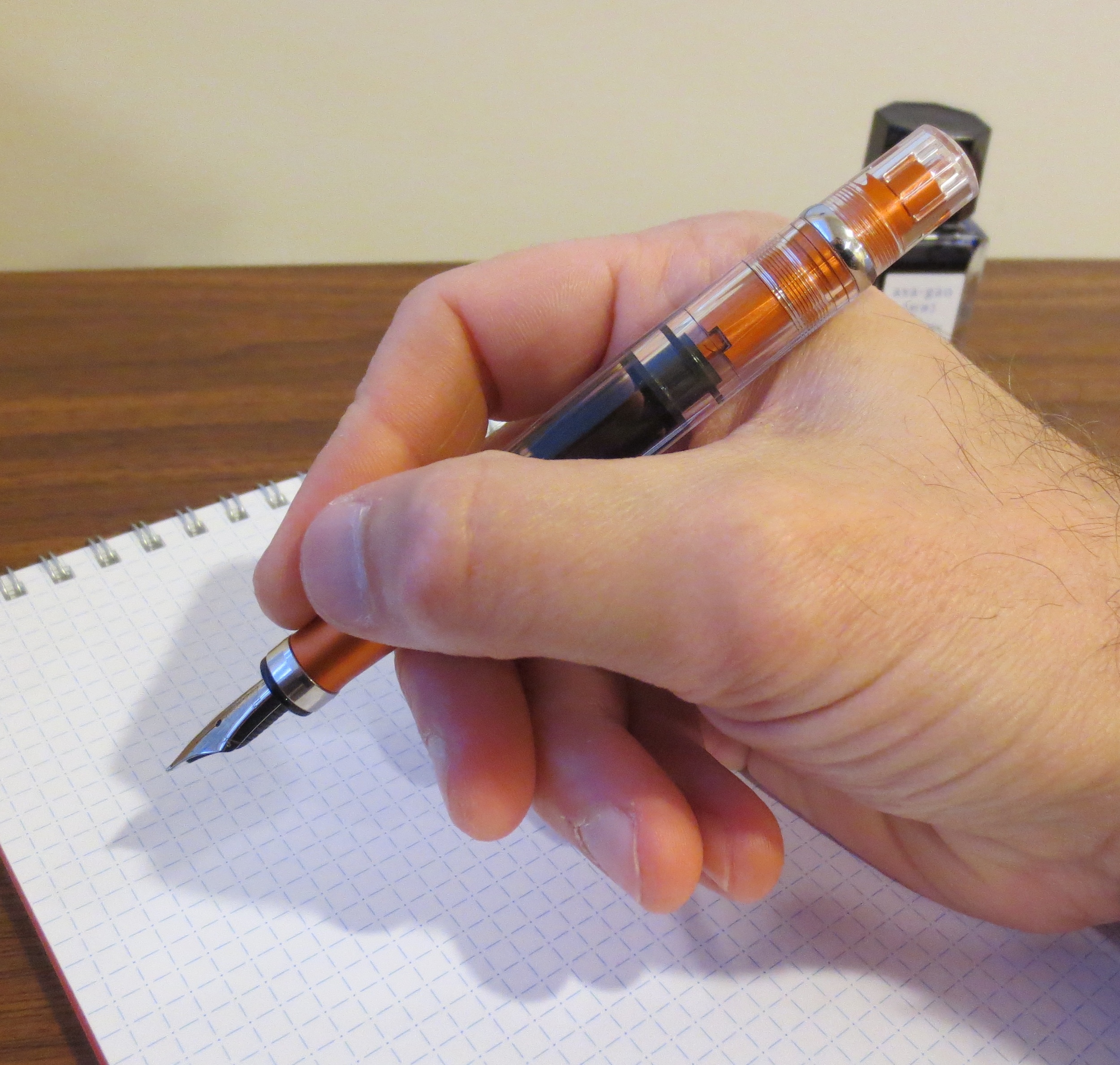After the Atlanta Pen Show, all the way back in April, I made the tough (for me) decision to liquidate a large number of pens in my collection and invest in a smaller number of more expensive custom pieces. I ended up ordering a Newton Shinobi, a Conid Bulkfiller Minimalistica, and a Scriptorium Balladeer. The most difficult part of ordering a custom pen is that you have to wait for the pen to actually be made, which in some instances can create a lag of three to six months between the time you pay for the pen in full and when you actually have the pen in your hands. It’s worth the wait, though. All three have exceeded my expectations.
While I don’t have a personal favorite—all three pens are well made, and very different—the Balladeer has surprised me the most. While I knew that I wanted to order a pen from Renee at Scriptorium Pens (you can read up on her and her story here), I was torn between several models.
Size
The Balladeer was my favorite from the beginning, but I hesitated because I thought it would be too big. I don't mind a large-diameter pen--I have several--but because I like to post my pens, weight becomes an issue if the cap is too heavy or if the pen posts too high. After some discussion with Renee, she suggested drilling out the barrel to decrease weight (which also has the benefit of increasing the pen's ink capacity when filled as an eyedropper), and tapering the barrel ever-so-slightly to allow the cap to post deeper than it normally would.
Renee conveniently offers pens in a variety of sizes (small, medium, large, and oversize), but keep in mind that even the medium is relatively large. I settled on a medium, after scrutinizing the measurements on the Scriptorium website and comparing them against what I considered the most comfortable pens in my collection. (The site is a pen geek's dream.) The exact degree of variation between sizes will differ depending on the model you order. To give some sense of the scale of the Balladeer, I would compare my *medium* to a slightly slimmer Montblanc 149.
Dartmoor Acrylic
The beauty of the Dartmoor acrylic doesn't show up as well in photographs as it does in person.
I'm a sucker for celluloids and other materials that *look* like celluloid, such as these Conway Stewart acrylics that Renee and other pen turners scooped up after Conway folded last year. My Balladeer features the "Dartmoor" acrylic, which I'd describe as a dark brown/green/black with veins and flecks of white, gold, and caramel. From what I've seen around the interwebs, Dartmoor and Amber are the two Conway Stewart acrylics that have received the most attention, and photos don't do the Dartmoor justice. To set off the Dartmoor, I opted for end caps made out of Urushi Red acrylic. The end result is a hand turned acrylic pen, made to my specifications, that, at least to me, is practically indistinguishable from a celluloid pen with urushi trim. To purchase the latter--or even to find someone who knows how to make it--would be prohibitively expensive.
Build and Trim
Scriptorium Pens Silver Clip. I love the minimalist engraving.
Renee knows her stuff. This pen is hand-turned, and if there are any manufacturing flaws or artifacts, I haven't found them yet. I chose the sterling silver clip and the stainless steel medium JoWo nib, which is the same steel nib used by Edison Pen Co. and Franklin-Christoph. JoWo nibs aren't my favorite, but they are more than serviceable, and the beauty of this pen is what makes it a pleasure to write with.
Value
All models of Scriptorium Pens start at $225, which includes a steel nib with a converter. Some materials, such as ebonite and the Conway acrylics, have an additional charge associated with them. Renee's pricing process is transparent and plainly set out on her site. Between the Dartmoor, the Urushi Red caps, and the sterling silver clip, this pen set me back approximately $275. Value is always a matter of opinion/preference, but I consider that a good deal for a work of art. To the extent any issues ever occur with the pen, I couldn't imagine that Renee's customer service would be anything less than impeccable.
Normal cartridge/converter filling system, but the pen also can be used as an eyedropper. I just haven't gotten around to testing this out ye!
Overall, I'm extremely happy with my Balladeer, and consider it a great purchase. I've been using it fairly exclusively for the past month or so, given that I find it so comfortable to write with. Renee will work with you to customize your pen to your needs, and I cannot recommend her services enough.
DISCLAIMER: I purchased this pen with my own funds, for my own collection. I have not been compensated in any way for this review. All thoughts expressed here are my own.






